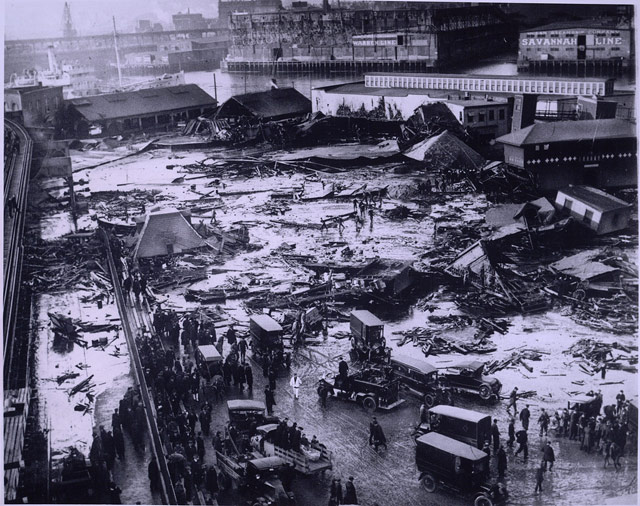The science of Boston’s molasses flood of 1919

On January 15, 1919 in Boston’s North End, a storage container holding around 2.3 million gallons of molasses ruptured, sending a 8-15 ft. wave of molasses shooting out into the streets at 35 mph. Twenty-one people died, many more were injured, and the property damage was severe. In an article in Scientific American, Ferris Jabr explains the science of the molasses flood, including why it was so deadly and destructive.
A wave of molasses does not behave like a wave of water. Molasses is a non-Newtonian fluid, which means that its viscosity depends on the forces applied to it, as measured by shear rate. Consider non-Newtonian fluids such as toothpaste, ketchup and whipped cream. In a stationary bottle, these fluids are thick and goopy and do not shift much if you tilt the container this way and that. When you squeeze or smack the bottle, however, applying stress and increasing the shear rate, the fluids suddenly flow. Because of this physical property, a wave of molasses is even more devastating than a typical tsunami. In 1919 the dense wall of syrup surging from its collapsed tank initially moved fast enough to sweep people up and demolish buildings, only to settle into a more gelatinous state that kept people trapped.
This could just be a Boston urban legend, but it’s said that on hot days in the North End, the sweet smell of molasses can be detected wafting through the air.





Stay Connected